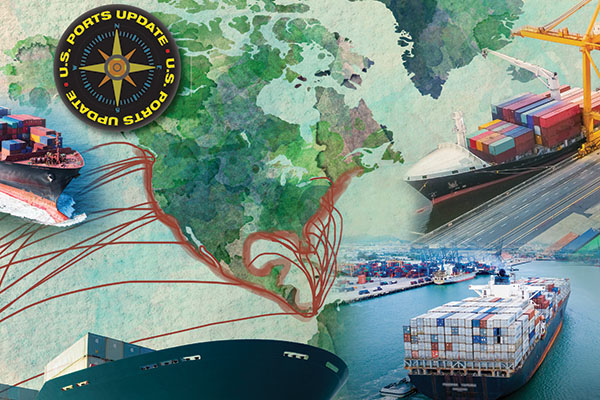Ports of Los Angeles and Long Beach leverage PierPass to gain more container throughput for 2020
This news comes at a time when notes of alarm have been sounded on the Pacific Rim about the loss of inbound vessel calls and market share to East Coast and Gulf ocean cargo gateways.

PierPass has announced updates on the OffPeak traffic mitigation program at the Ports of Los Angeles and Long Beach indicating that ample appointments continue to be available.
Indeed, during the third calendar quarter of 2019, a weighted average of 30% of available daytime appointments and 41% of available nighttime appointments went unused.
This news comes at a time when notes of alarm have been sounded on the Pacific Rim about the loss of inbound vessel calls and market share to East Coast and Gulf ocean cargo gateways.
Terminals have also been working with the trucking community and other stakeholders to add new types of appointment-based services to help truckers achieve greater efficiency, taking advantage of the scalability and flexibility they gained by switching to an appointment-based system.
Over the past year, many terminals have begun offering appointments for dropping off export and empty containers. These services make it easier to arrange dual transactions, with a single truck trip dropping off one container and picking up another one. Of the 12 terminals, eight now offer appointments for exports and for empties.
In another operational improvement, most terminals are now allowing same-day canceling and rebooking of appointments if an appointment is available.
In the year since PierPass launched an appointments-based system for trucks picking up containers at the Ports of Los Angeles and Long Beach, long late-afternoon queues have been eliminated, and ample appointment opportunities are available for each container.
On average, port terminals are offering about a third more appointment slots than there are containers to be picked up.
Furthermore, terminals have been working with the trucking community and other stakeholders to add new types of appointment-based services to help truckers achieve greater efficiency, taking advantage of the scalability and flexibility they gained by switching to an appointment-based system.
“Terminals continue offering at least two peak shift and two off-peak shift appointments for each container prior to free time expiration, providing multiple options for each pickup,” said John Cushing, President and CEO of PierPass. “Over the past year, many terminals have also introduced new services. All of this gives the cargo community an enhanced traffic mitigation system, which is running smoothly one year in.”
As reported in Logistics Management, the OffPeak program was restructured in November 2018.
The revised program, informally called “PierPass 2.0,” reduces traffic congestion by spreading cargo movement across two shifts, using appointments rather than the daytime-only Traffic Mitigation Fee (TMF) used in the original OffPeak program that started in 2005. From July 2005 through October 2019, OffPeak has diverted 46.7 million truck trips from Los Angeles weekday daytime traffic.
The revised OffPeak program has achieved the major objectives of the overhaul, including eliminating the long truck queues that previously formed in late afternoons as trucks waited outside the terminals until 6:00 p.m. to avoid the TMF.
All 12 terminals report that the late-afternoon queues outside their gates have been eliminated. This is good news for global shippers reliant on the nation's two leading seaports and their complex supply chain networks.

Article Topics
Ports News & Resources
U.S.-bound import growth track remains promising, notes Port Tracker report Q&A: Port of Oakland Maritime Director Bryan Brandes Signs of progress are being made towards moving cargo in and out of Baltimore New Breakthrough ‘State of Transportation’ report cites various challenges for shippers and carriers in 2024 Industry experts examine the impact of Baltimore bridge collapse on supply chains Port of Baltimore closed indefinitely to ships after 1.6-mile Key Bridge collapses following maritime accident February and year-to-date U.S. import growth is solid, reports S&P Global Market Intelligence More PortsLatest in Logistics
Diesel back over $4 a gallon; Mideast tensions, other worries cited Four U.S. railroads file challenges against FRA’s two-person crew mandate, says report XPO opens up three new services acquired through auction of Yellow’s properties and assets FTR’s Trucking Conditions Index weakens, due to fuel price gains U.S. rail carload and intermodal volumes are mixed, for week ending April 6, reports AAR LM Podcast Series: Examining the freight railroad and intermodal markets with Tony Hatch Supply Chain Stability Index sees ‘Tremendous Improvement’ in 2023 More LogisticsAbout the Author
Subscribe to Logistics Management Magazine

Find out what the world's most innovative companies are doing to improve productivity in their plants and distribution centers.
Start your FREE subscription today.
April 2023 Logistics Management

Latest Resources














